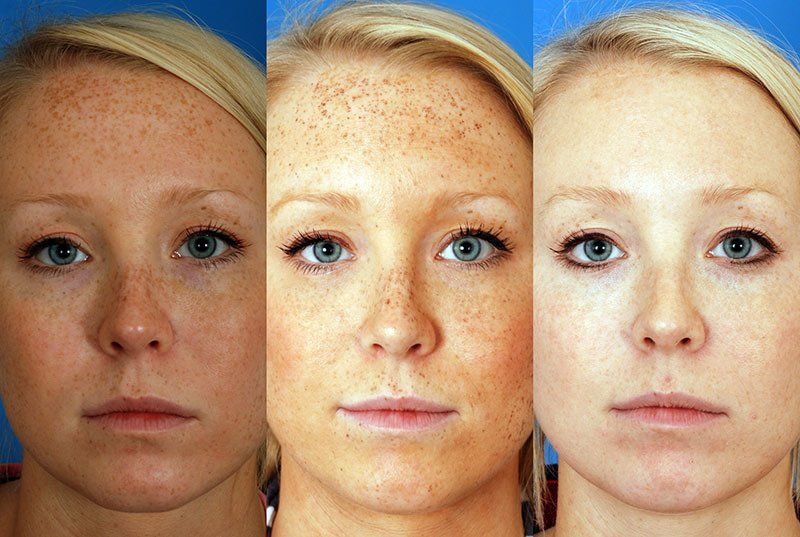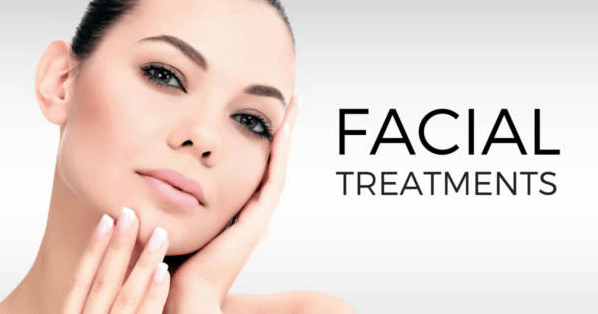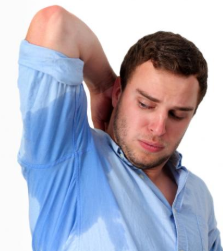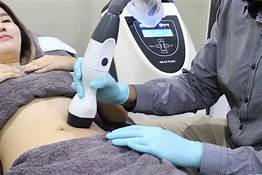Treating Pigmented Lesions
Russell Gornichec • June 21, 2019
Addressing unwanted pigmented or vascular lesions from skin surfaces

Vascular and Pigmented Lesions
Freckles, birth marks, moles. Almost everybody has some form of hyperpigmentation. Caused by an excess of melanin (the stuff that produces your natural skin color),
Dyspigmentation is simply areas of skin that are darker or lighter in color than the rest of your skin. What’s the difference between a freckle and an age spot? We outline the cause behind each. Hint: sun exposure is a big factor. So slather on your SPF and read on.
Freckles
Freckles are usually inherited and are more prevalent in people with fair skin. They also tend to become darker when exposed to the sun. They are those pale brown spots most commonly found on the face, arms, shoulders, and upper back. And while genetics play a big part in whether you have freckles, if you notice them becoming darker and more prevalent, that’s a sign you’re getting too much sun.
Moles and Birthmarks
Moles, like freckles, are very common. The average person can have between three and 60 moles on their body. They are darker, bigger than freckles and are often raised from the skin. Although most moles are with you for life, some can fade over time. Moles can be present at birth (birthmarks) and can also form due to sun exposure. It’s not necessarily a bad sign for moles to change in size or color, so don’t panic, but if a mole changes in appearance quickly, a visit to your doctor is a good idea.
Age/Liver Spots
Age spots are mainly small, flat patches of skin found on the hands and face. They often start off faint and get darker over time. The sole cause of age spots is sun exposure. Melanin absorbs the sun’s UV rays in order to protect the skin which produces dark spots. Want to avoid them? Wear SPF.
Melasma Spots
Melasma spots are a form of hyperpigmentation caused by hormonal changes, especially in women, often during pregnancy or taking birth control pills. Hormonal changes can trigger overproduction of melanin in the body, leading to large areas of darkened skin. Melasma is made worse with sun exposure.
Other Causes for Dark Spots
Acne scars can lead to hyperpigmented areas on your face. It is best to avoid picking at your pimples in order for your skin to heal properly. Also make sure you apply sunscreen or avoid the sun while blemishes are healing. Skin injuries and surgeries can also leave dark spots on the skin.
Seeing a trend? Of course, there is nothing wrong with having beauty marks—and many, like Marilyn Monroe’s, can be beautiful—but some are signs of sun damage. It is recommended to wear sun protection 24/7/365. Not just in the sunny summer months.
Vascular lesions (rosacea), (telangiectasias), superficial small vessels at skin surfaces and pigmentations (solar lentigo, freckles, "liver spots", “age” spots of the face, hands and body can be reduced or removed with Laser technology with a quick painless process that can leaving you looking the way you want with worrying about those skin imperfection.
Some examples below of utilizing laser IPL energy to remove unwanted hyperpigmentatios.
Using IPL "laser" technologies, light energy can be utilized to damage pigment creating cells to reduce or eliminate skin pigmentations. The light energy targets the hemoglobin in blood vessels to eradicate vascular lesions or the melanin in skin cells to eliminate the pigmented lesions. The depth can be modulated with filters and the energy used adjusted to create a pain free treatment that can show results in a short period of time. Sometimes the effects are seen with a single treatment while other lesions may respond better to multiple therapy sessions.
Contact Us

Types of hair removal (not all-inclusive list) Shaving : (cheap, easy, quick, duration 1-3 days) Cutting the hair shaft at skin level with a sharp razor. The easiest method we rely on, and one of the cheapest, is also one that can leave our skin bumpy, stubbly and even bloody. When hair is cut at an angle it may tend to grow inward and cause “ingrown hairs” especially if curly in nature. This may cause inflamed and bumpy skin (infection) that may not resolve until hair is removed. Depilatory creams : (more expensive than shaving, easy, quick, 1-2 weeks duration) This technique uses chemicals that dissolve the hair shaft to skin level or a little below. Less likely to get ingrown hairs. Just make sure to read labels and follow instructions very carefully, and to test the cream on a small patch of skin on your arm or leg to check if you’re allergic and before trying it on more sensitive areas. Depilatory creams dissolve hair in minutes, but they tend to smell like wet dog mixed with gasoline. Waxing : ($, painful, duration is like depilatory creams) Waxing involves applying hot or cold wax to an area and removing the wax, together with the body hair, with a strip of cloth. This breaks the hair shaft at skin level or below. You can do it on your legs, underarms, bikini area, eyebrows, and upper lip – but it’s best left to the professionals. If you’re a seasoned “waxer” and know what to expect in terms of pain and aftercare, ready-to-use wax strips can be locally purchased and utilized as DIY. Sugaring : ($, can be DIY, similar duration to waxing) Sugaring is like waxing, but the method uses sugar mixed with a paste or gel instead of wax. It’s a traditional hair-removal method popular in the Middle East. Recommend having it professionally done if it’s your first time to try it out. Reportedly less painful. Threading: (cheap, quick, painful, longer duration than shaving) Threading involves twisting a piece of thread together (hence, the name) to trap hair in the area where the thread intersects. By doing this, each hair is pulled out from the root, like tweezing or waxing. Small areas of the body are best for threading, like your eyebrows or upper lip. Results like waxing but for areas sensitive to waxing or creams. Threading is best done by a professional, especially if you’re getting it done on your eyebrows for quality shaping. Usually a cooling gel is applied afterwards to reduce redness and swelling. Tweezing : (cheap, easy, quick, painful, similar duration to waxing) Plucking hair with tweezers causes hair shaft breakage and is usually used in fine sensitive areas, DIY or professionally performed. Because tweezing involves removing hair one by one, this won’t work so well on large areas. Tweezing would be best for removing strays post-shave or wax. Attempt to tweeze in the direction of the hair growth. Epilation : (special equipment, painful, similar duration to waxing) Epilation is like high-tech tweezing. An epilator has a series of small tweezer heads on a spinning wheel and plucks out your hair from the root as you roll it over your skin. If this sounds painful its because it usually is. Eflornithine hydrochloride cream (Vaniqa) : ($$, possible side effect, long duration hair follicle growth deterent) Not an exfoliant that dissolves the hair shaft but reduces hair growth by enzymatic blockage. Women who feel they have been plagued by little chin hairs or thick facial hair can now benefit from this effective, but costly, prescription product. After approximately two months of twice daily use, the cream slows down hair growth. Electrolysis : ($$, time consuming, less painful, permanent hair follicle eradication) Usually performed by a professional who places a tiny needle with an electric current in the hair follicle. There are two primary hair removal methods with electrolysis: galvanic and thermolytic. -Galvanic hair removal chemically destroys the hair follicle. -Thermolytic removal uses heat to destroy the follicle. In either case be sure to find a professional who is highly trained and knowledgeable. You can get electrolysis on any part of the body. Electrolysis is a permanent way to remove hair. That said it is possible to see hair growth in a region previously treated. The secondary growth you see will not be the same hair that has been treated. It takes anywhere from three to ten weeks for some hair to grow, and a percentage of hairs in a given area can lay dormant under the skin. Important Note: Permanent hair removal applies to follicle damage of active growth hair unit. Because hair can be in one of four growth stages only about 25-30% of any given hair shaft seen at skin surface is amenable to follicular damage. After spending the time and energy of electrolysis on a given area it is sometimes frustrating to find hair growth returning weeks or months later. These represent hair shaft/follicles that were not seen or were missed by prior treatments.










